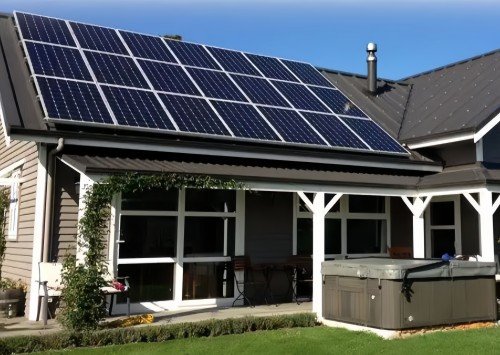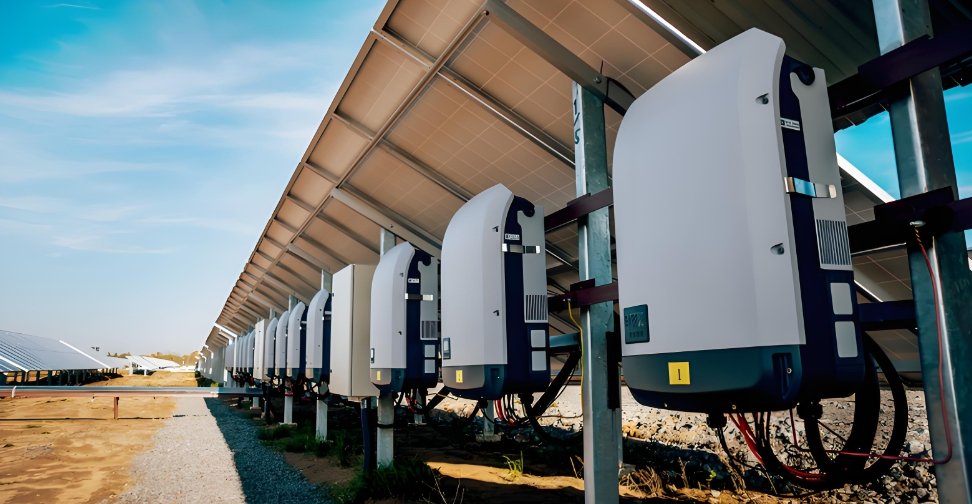When comparing the cost of solar panels and inverters, it's important to understand that both play essential roles in a solar energy system, but their costs vary significantly depending on various factors. Let’s break down the costs and see which is typically cheaper.
Comparison of Costs
On average, solar panels are generally cheaper than inverters. However, the total cost of a solar energy system includes both the solar panels and the inverter, along with other components like batteries and wiring. Let's examine the typical cost range for each.

-
Solar Panels: Solar panels are typically priced by wattage and are much more affordable on a per-watt basis.
Price Range for Solar Panels: €0.45 - €0.90 per watt.
For a 300W panel, the cost could range from €135 - €270. -
Inverters: Inverters tend to be more expensive as they are critical for converting DC power generated by the panels into usable AC power for your home or business.
Price Range for Inverters: €900 - €4,500, depending on the brand and capacity (for inverters between 3kW to 10kW).
Cost Breakdown
Let’s look at the components that contribute to the costs of both solar panels and inverters.

Solar Panel Costs
- Materials: Solar panels are made from silicon, which is relatively inexpensive, but high-quality panels can include additional materials like tempered glass and aluminum frames.
- Manufacturing: Solar panel production costs are relatively low due to mass production.
- Efficiency: Higher-efficiency panels cost more, but they generate more power for the same size, improving overall value.
| Panel Type | Price per Watt | Efficiency | Typical Panel Cost (300W) |
|---|---|---|---|
| Monocrystalline1 | €0.60 - €0.90 | 18% - 22% | €180 - €270 |
| Polycrystalline2 | €0.45 - €0.60 | 15% - 18% | €135 - €180 |
| Thin-Film3 | €0.35 - €0.70 | 10% - 13% | €105 - €210 |
Inverter Costs
- Technology: The more advanced the technology (such as hybrid inverters that combine battery storage), the higher the cost.
- Capacity: Larger inverters designed to handle bigger systems will cost more.
- Brand and Quality: Premium brands, known for durability and performance, charge a premium.
| Inverter Type | Price Range | Features | Typical Cost for 5kW |
|---|---|---|---|
| String Inverters4 | €900 - €2,200 | Suitable for residential use | €1,350 |
| Microinverters5 | €130 - €270 each | Module-level optimization | €1,350 - €1,800 |
| Hybrid Inverters6 | €1,800 - €4,500 | Integration with battery storage | €2,700 - €4,000 |
Why Solar Panels Are Cheaper
Solar panels tend to be cheaper for a few key reasons:
- Simpler Technology: Solar panels are relatively straightforward in terms of manufacturing. The core technology—solar cells—has been mass-produced for years, lowering costs.
- Lower Materials Cost: While high-quality silicon and other materials are used in the production of solar panels, they are generally more affordable than the components found in inverters, like microprocessors, capacitors, and cooling systems.
- Standardized Production: Solar panels are mass-produced in factories worldwide, which drives down the price through economies of scale.
Why Inverters Can Be More Expensive
Inverters are often more expensive due to several factors:
- Complexity of Technology: Inverters have to convert DC power from the solar panels into AC power, which requires more sophisticated technology, especially when dealing with varying voltages and currents. Hybrid inverters, which also manage battery storage, can be even more complex and expensive.
- Higher Manufacturing Costs: The production of inverters involves the assembly of several high-end components such as semiconductors, control circuits, transformers, and cooling mechanisms.
- Quality and Durability: Inverters are exposed to a wide range of environmental conditions and need to be durable and reliable over a long lifespan, which adds to the cost.
- Warranty and Support: Inverters often come with extended warranties (10-15 years) to ensure longevity and performance, and the service and support provided can contribute to higher prices.
Conclusion
While solar panels tend to be cheaper than inverters, it’s essential to remember that both components are necessary for a functional solar energy system. Inverters are typically more expensive due to their complexity, technological components, and role in managing energy conversion. Solar panels, on the other hand, are more affordable due to simpler technology and mass production. When planning your solar installation, it’s important to balance the costs of both and select the right components for your energy needs.
Footnote:
-
This link explains the Monocrystalline solar panel type, its high efficiency, and price range. ↩
-
This link highlights the Polycrystalline solar panel type, its cost-effectiveness, and applications. ↩
-
This link details the Thin-Film solar panel type, its lower efficiency, affordability, and flexibility. ↩
-
This link explains the String Inverters type, their affordability, and suitability for residential systems. ↩
-
This link highlights the Microinverters type, their module-level optimization benefits, and typical applications. ↩
-
This link details Hybrid Inverters, their ability to integrate with battery storage, and their higher cost range. ↩




